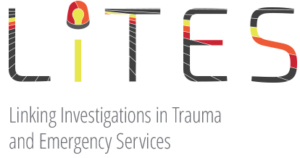Research
Research in EMS is important and leads to evidence based clinical protocols and improved patient care. The Region 11 EMS system has a Data/Research Committee that is actively engaged in multiple studies.
Research News

Linking Investigations in Trauma and Emergency Services (LITES)
The Prehospital Airway Control Trial (PACT) evaluates different airway management methods in trauma patients using Exception From Informed Consent (EFIC), which is important for emergency care research. Region 11 EMS, Chicago Fire Department, and local Trauma Centers are participating in this research study. Read more about PACT on the study website.
PACT Memo from the Region 11 EMS Medical Directors Consortium
Region 11 EMS Recent Publications
Use of a web-based system with barcode identifiers (EMTrack) successfully tracked patients from prehospital to hospital during planned operational days and mass gathering events. Farcas A, Zaidi HQ, Wleklinski N, Tataris KL. Implementing a Patient Tracking System in a Large EMS System. Prehospital Emergency Care. 2021 Feb 2; 1-9.
A midazolam protocol for prehospital agitation was associated with reduced agitation and a low rate of adverse events. Huebinger RM, Zaidi HQ, Tataris KL, Weber JM, Pearlman KS, Markul E, Stein-Spencer L, Richards CT. Retrospective Study of Midazolam Protocol for Prehospital Behavioral Emergencies. West J Emerg Med. 2020 April 21;21(3):677-683.
Large cities pose unique challenges that limit the effectiveness of system improvement interventions. Successful implementation of integrated cardiac resuscitation systems of care can serve as a model for other urban centers. Del Rios M, Weber JM, Pugach O, Nguyen H, Campbell T, Islam S, Stein-Spencer L, Markul E, Bradshaw Bunney E, Vanden Hoek T. Large urban center improves out-of-hospital cardiac arrest survival. Resuscitation. 2019 Jun; 139:234-240.
A Cincinnati Prehospital Stroke Scale (CPSS) score of 3 reliably identifies Large Vessel Occlusion (LVO) in Acute Ischemic Stroke (AIS) patients. EMS providers may be able to use the CPSS, a simple, widely adopted prehospital stroke assessment tool, with a cut-off score to screen for patients with suspected LVO. Richards CT, Huebinger RM, Tataris KL, Weber JM, Eggers L, Markul E, Stein-Spencer L, Pearlman KS, Holl JL, Prabhakaran S. Cincinnati Prehospital Stroke Scale Can Identify Large Vessel Occlusion Stroke. Prehospital Emergency Care. May-June 2018; 22(3):312-318.
In a survey of over 2000 Chicago Fire Department EMS providers to assess perceptions on Termination of Resuscitation in a large, urban EMS system, we found that scene safety, death notification delivery, and lack of formal training were barriers and required educational and operational initiatives to overcome. Tataris KL, Richards CT, Stein-Spencer L, Ryan S, Lazzara P, Weber JM. EMS Provider Perceptions on Termination of Resuscitation in a Large, Urban EMS System. Prehospital Emergency Care. 2017, May 8:1-6.
Most 911 callers for stroke use vague and non-specific words to describe the emergency and lead to difficulty for the Emergency Medical Dispatcher (EMD) to identify stroke symptoms provide accurate information to EMS responders. Richards CT, Wang B, Markul E, Albarran F, Rottman D, Aggarwal NT, Lindeman P, Stein-Spencer L, Weber JM, Pearlman KS, Tataris KL, Holl JL, Klabjan D, Prabhakaran S. Identifying Key Words in 9-1-1 Calls for Stroke: A Mixed Methods Approach. Prehospital Emergency Care. 2017 Jun 29:1-6.
